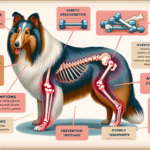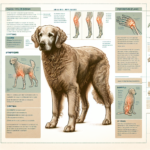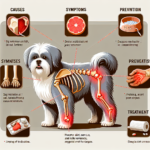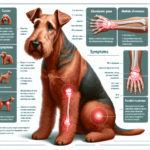Soft Coated Wheaten Terrier Joint Pain: Causes, Symptoms, Prevention, and Treatment
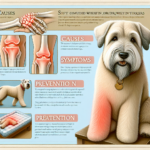
Introduction
The Soft Coated Wheaten Terrier, often simply referred to as the Wheaten Terrier, is a medium-sized breed known for its friendly disposition and distinctive silky, wheat-colored coat. Originating from Ireland, this breed was initially used for herding and guarding livestock. Over time, the Wheaten Terrier has become a beloved family pet, admired for its playful nature and adaptability.
While the Wheaten Terrier is generally a healthy breed, it is not immune to certain health issues. Among these, joint pain is a significant concern that can affect the quality of life for these dogs. Understanding the causes, symptoms, prevention, and treatment of joint pain is crucial for ensuring the well-being of your Wheaten Terrier.
Joint health is particularly important for the Wheaten Terrier due to its active lifestyle and genetic predispositions. Maintaining healthy joints can help prevent pain and mobility issues, allowing your dog to enjoy a full and active life.
Breed-Specific Joint Pain Risks
Genetic Predisposition
The Wheaten Terrier, like many other breeds, is genetically predisposed to certain joint-related issues. Hip dysplasia, a condition where the hip joint does not fit properly into the hip socket, is one of the most common genetic issues affecting this breed. Elbow dysplasia, where the elbow joint is malformed, can also occur. Both conditions can lead to arthritis and chronic pain if not managed properly.
Age-Related Risks
As Wheaten Terriers age, the risk of developing joint pain increases. Arthritis is a common age-related condition that affects the joints, leading to pain and stiffness. Typically, signs of arthritis may begin to appear in Wheaten Terriers around the age of 7 or 8, although this can vary depending on the individual dog and its overall health.
Activity Level and Joint Stress
Wheaten Terriers are known for their high energy levels and love for physical activities such as running, playing, and even participating in dog sports. While regular exercise is essential for their overall health, excessive or high-impact activities can put stress on their joints, potentially leading to injuries or exacerbating existing conditions.
Common Symptoms of Joint Pain in Wheaten Terriers
General Symptoms
- Limping: One of the most noticeable signs of joint pain is limping or favoring one leg over the other.
- Stiffness: Stiffness, especially after rest or sleep, can indicate joint pain.
- Reluctance to Move: A dog that is hesitant to jump, climb stairs, or engage in physical activities may be experiencing joint pain.
- Swelling: Swelling around the joints can be a sign of inflammation and pain.
- Behavioral Changes: Changes in behavior, such as irritability or withdrawal, can also indicate discomfort or pain.
Breed-Specific Symptoms
In Wheaten Terriers, joint pain may manifest in specific ways due to their unique build and activity levels. For instance, you might notice a decrease in their usual playful behavior or a reluctance to engage in activities they once enjoyed. Additionally, they may show signs of discomfort when being touched or handled around the affected joints.
When to Consult a Vet
If you observe any of the above symptoms in your Wheaten Terrier, it is essential to consult a veterinarian promptly. Early diagnosis and intervention can significantly improve the prognosis and quality of life for your dog. Persistent limping, noticeable swelling, or severe behavioral changes should be addressed immediately.
Preventive Measures for Joint Health
Exercise Recommendations
Regular, moderate exercise is crucial for maintaining joint health in Wheaten Terriers. Activities such as walking, swimming, and gentle play can help keep their joints flexible and muscles strong without causing excessive stress. Avoid high-impact activities like jumping or running on hard surfaces, which can exacerbate joint issues.
Dietary Suggestions
A balanced diet rich in essential nutrients can support joint health. Consider incorporating foods or supplements that contain glucosamine, chondroitin, and omega-3 fatty acids, which are known to promote joint health and reduce inflammation. Always consult your veterinarian before adding any supplements to your dog’s diet.
Weight Management
Maintaining a healthy weight is vital for reducing stress on your Wheaten Terrier’s joints. Obesity can exacerbate joint pain and lead to other health issues. Ensure your dog receives a balanced diet and regular exercise to keep them at an optimal weight. Your veterinarian can provide specific guidelines based on your dog’s age, size, and activity level.
Early Screening and Monitoring
Regular veterinary check-ups are essential for early detection of joint issues. Your vet may recommend specific screening tests, such as X-rays or joint fluid analysis, to monitor your dog’s joint health. Early intervention can help manage conditions like hip dysplasia or arthritis before they become severe.
Treatment Options for Joint Pain
Non-Surgical Treatments
Non-surgical treatments for joint pain in Wheaten Terriers include medications, physical therapy, and lifestyle adjustments. Anti-inflammatory medications and pain relievers can help manage pain and reduce inflammation. Physical therapy, including exercises and massage, can improve joint mobility and strength. Additionally, lifestyle adjustments such as providing a comfortable bed and avoiding high-impact activities can alleviate joint stress.
Surgical Options
In severe cases, surgical intervention may be necessary to address joint pain. Common surgical options include hip replacement, joint fusion, or arthroscopy to remove damaged tissue. These procedures can significantly improve mobility and reduce pain, but they come with risks and require a thorough discussion with your veterinarian.
Alternative Therapies
Alternative therapies such as acupuncture, hydrotherapy, and massage can also benefit Wheaten Terriers with joint pain. Acupuncture can help reduce pain and inflammation, while hydrotherapy provides low-impact exercise that strengthens muscles without stressing the joints. Massage can improve circulation and relieve muscle tension around the affected joints.
Lifestyle and Management Tips
Daily Care Routine
A consistent daily care routine can help manage and alleviate joint pain in Wheaten Terriers. This routine might include gentle exercise, a balanced diet, and regular administration of any prescribed medications or supplements. Monitoring your dog’s behavior and adjusting activities based on their comfort level is also essential.
Modifying the Home Environment
Making your home more comfortable for a dog with joint pain can significantly improve their quality of life. Consider adding ramps to help them navigate stairs, providing orthopedic beds for better support, and placing non-slip mats on slippery surfaces to prevent falls.
Long-Term Management
Long-term management of joint pain involves regular veterinary check-ups, ongoing monitoring of your dog’s condition, and making necessary adjustments to their care routine. Keeping your Wheaten Terrier active and engaged with low-impact activities can help maintain their mobility and overall well-being.
FAQs About Soft Coated Wheaten Terrier and Joint Pain
What are the early signs of joint pain in Wheaten Terriers?
Early signs of joint pain in Wheaten Terriers include limping, stiffness, reluctance to move, and behavioral changes such as irritability or withdrawal. If you notice any of these symptoms, consult your veterinarian for a thorough evaluation.
Can joint pain in Wheaten Terriers be prevented?
While it may not be possible to prevent joint pain entirely, you can take steps to reduce the risk. Regular exercise, a balanced diet, weight management, and early screening can help maintain joint health and catch issues early.
Are there specific exercises that are better for Wheaten Terriers with joint pain?
Low-impact exercises such as walking, swimming, and gentle play are ideal for Wheaten Terriers with joint pain. These activities help maintain joint flexibility and muscle strength without causing excessive stress.
What dietary supplements can support joint health in Wheaten Terriers?
Supplements containing glucosamine, chondroitin, and omega-3 fatty acids can support joint health and reduce inflammation. Always consult your veterinarian before adding any supplements to your dog’s diet.
When should I consider surgical options for my Wheaten Terrier’s joint pain?
Surgical options should be considered when non-surgical treatments are no longer effective, and your dog’s quality of life is significantly impacted by joint pain. Consult your veterinarian to discuss the best course of action based on your dog’s specific condition.
Conclusion
Joint pain is a significant concern for Soft Coated Wheaten Terriers, but with proper care and attention, you can help manage and alleviate their discomfort. Understanding the causes, symptoms, prevention, and treatment options is crucial for ensuring your dog’s well-being. Regular veterinary check-ups, a balanced diet, appropriate exercise, and a comfortable home environment can all contribute to maintaining your Wheaten Terrier’s joint health. By taking proactive measures and consulting your veterinarian regularly, you can help your dog lead a happy, active, and pain-free life.

